If I had to describe Burma as a smell, it would be ngapi. At times, walking along Rangoon’s streets, the smell seemed to rise up from the ruined pavements. Every food market had its ngapi and dried fish booth which perfumed the air. It is one of the ingredients of fish sauce, which is used in Burmese recipes and also put on the table mixed with garlic and chilli flakes, as we would put out mustard or ketchup. It is also the key flavour in balachung, a Burmese condiment I learned to love. So, what is ngapi you ask? It is fermented (read “rotten”) fish or shrimp paste, mashed with salt. Moulemein used to be the centre of ngapi production, and early travellers used to comment about the fish or shrimp spread out on the beach to rot in the sun.
“Ngapee is a condiment made of preserved fish, which is universally eaten by the people of Burma, and for which there is consequently a very large demand. It is a sort of paste which mixes with rice like chtnee. Having never been induced to taste it, I am unable to offer any experienced opinion as regards its flavour, but judging from its appearance I should think anchovies should be preferred by Europeans.”
From “Journal of a Voyage Up the Irrawaddy to Mandalay and Bhamo,” by James Talboys Wheeler, 1871.
Balachung is a Burmese condiment made from dried shrimp, fried garlic and onions, chilli pepper and ngapi. It was popular with Europeans in Colonial times, as it had a milder rotten fish taste compared to pure ngapi or fish sauce. Nevertheless, it is still intensely fishy and salty (think anchovies on steroids) as well as pungent. So pungent that no one would dream of making it indoors. My Dad did it once, and was banned from making it indoors ever again. The pungency comes from just a small amount of ngapi in the recipe.
We had balachung on curries, or just a spoonful on plain rice. My mum used to like white bread balachung sandwiches. I had it the other day mixed into a simple chicken and vegetable stir-fry, and it lifted the plain dish to ambrosial heaven. I didn’t like it as a child, but one day my Dad said to me, “Never mind. You have to have been born in Rangoon to like this stuff.” Although that didn’t make me an instant convert, I remembered the comment much later and asked Dad to give me some of his balachung the next time he made it. He was overjoyed. My family? Not so much. To this day, more than twenty years after opening that first jar, no one except me eats it. My daughter practically has to leave the room; my husband puts up with it but not without comments like, “When are you going to tell CSIS you’re making chemical weapons?”
Every summer I set up a mini kitchen outside, in order to make balachung. The recipe my family has always used is from Charmaine Solomon’s classic, “The Complete Asian Cookbook.” All the ingredients are available at any Chinese food store. The ngapi is usually from Thailand and labelled “Shrimp Paste.” Read the label on the side of the pot – there should be nothing in it except shrimps and salt.
Balachung
Ingredients:
20 cloves of garlic
4 medium onions
2 cups peanut oil
8 oz dried shrimp. Pick the pinkest, largest, softest brand you can find.
2 tsp. chilli powder
2 tsp. salt
1 tsp. ngapi
1/2 cup vinegar
Peel the garlic and cut into thin slices, from top to bottom, not across. Cut off the stem and root ends of the onions, then cut them in half from top to bottom. Now it is easier to peel off the brown skin. Slice across into very thin strands. Soak the shrimp in warm water for 10 minutes, drain and pat dry. To turn the shrimp into powder you can use a food processor or mortar and pestle. Process until you have a fluffy shrimp pile. Dissolve the ngapi in the vinegar by stirring vigorously, and add the salt.
Heat the oil to medium or 340-350 degrees F in a large saucepan or deep wok. I used to use an electric wok, but this year I used a large enamelled cast iron saucepan on a portable induction burner. Do this outside!
Fry the garlic slices till they are golden, then lift out into a colander set over a bowl. This will take just a few minutes and you must be careful not to let the garlic burn.
Now fry the onion in the same oil. At first it seems as though all the slices won’t fit, but gradually most of the moisture is fried out of the onion, it turns golden and reduces to a pile barely larger than the garlic. This step takes a bit longer, about 15-20 minutes, and you need to stir occasionally at first, then constantly towards the end. Lift out the onion and drain in another colander. You can put the excess oil from the onions and the garlic back in the pan and let it come up to the heat again.
Add the shrimp fluff to the oil. It will bubble up. Fry for five minutes, then add the chilli powder and the ngapi mix. It will bubble up again, a strong fermented fish odour will permeate the neighbourhood, cats will come running into the yard, the neighbours will call out the hazardous waste disposal team……not really, I made those last two things up. It will be a pungent smell at first, but will mellow. Fry this mixture until it has darkened to a toasty brown. Take off the heat and let it cool. Mix in the onion and garlic, then put it into small sterilized jars. I keep the jars in a cool cupboard, but once opened they should be refrigerated.
This recipe yielded four cups or 32 fl. oz.

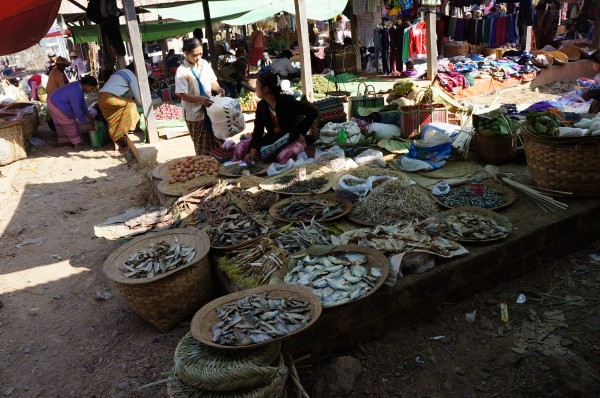
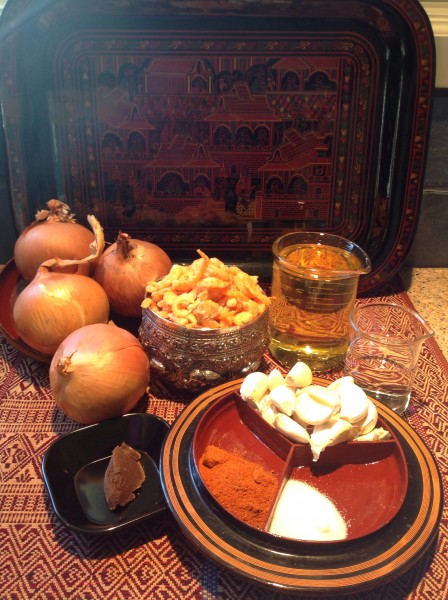
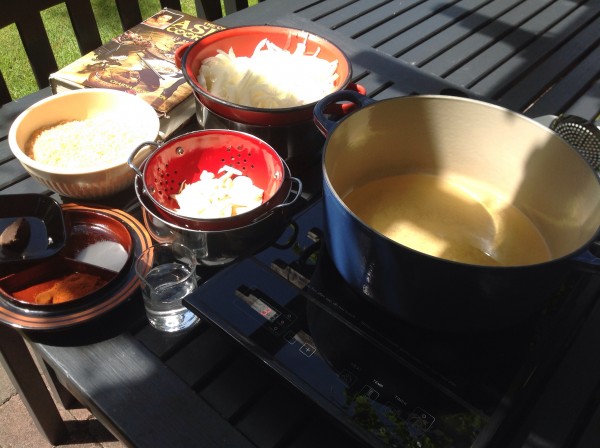
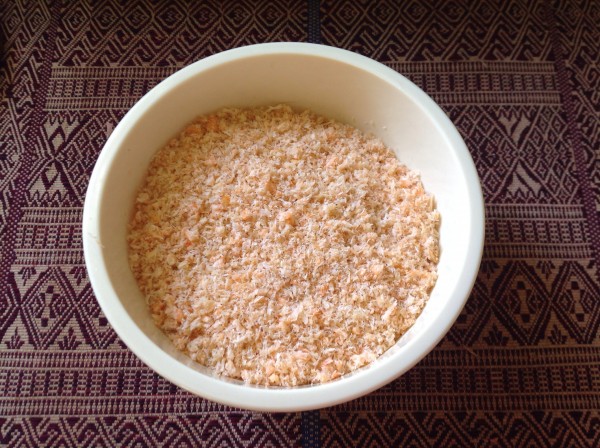
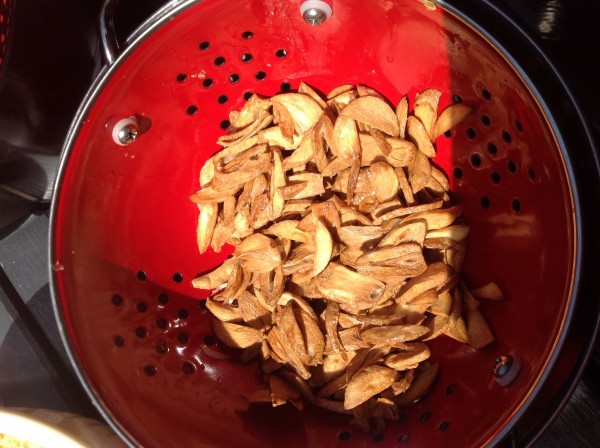
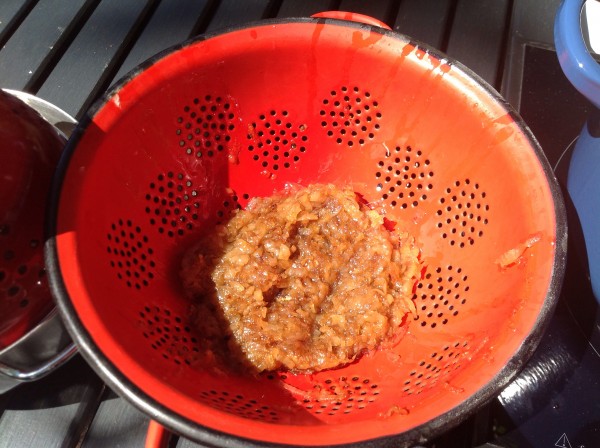
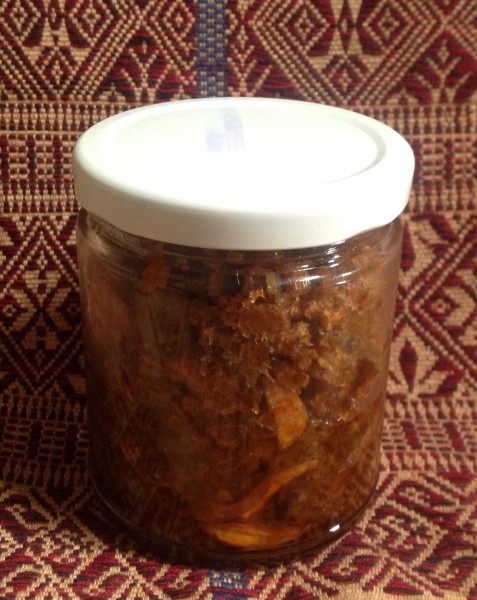
what the Burmese call Balachung, the Malays of Peninsular Malaya call Belachan/Belacan. it’s the same thing. i wonder who made it first!
Pingback: What You Need To Know About Burmese Food - Markham, Vaughan, Brampton | glpworldwide.pi
Pingback: Adaptation – Timeless Travels